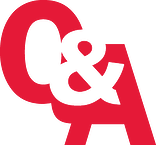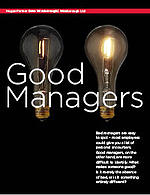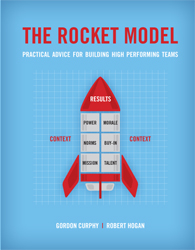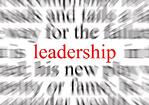
Extensive research highlights the importance of work engagement – employees’ morale and involvement with work – as determinant of individual and organizational performance. Large-scale studies show that engagement is positively correlated with a wide range of important business outcomes, such as organizational commitment, citizenship, innovation, and team performance, and negatively correlated with turnover intentions, strain, and burnout (Maslach, Schaufeli, & Leiter, 2001; Seibert, Wang, & Courtright, 2011). Furthermore, meta-analytic evidence indicates that higher engagement levels are directly translated into higher business revenues and profits (Harter et al, 2009). These findings have prompted organizations to monitor engagement levels via regular employee surveys. According to Gallup, who surveys millions of employees every year, only 30% of Americans are engaged at work, and the most common reason for disengagement is employees’ direct boss or line manager. Thus leadership is a critical antecedent of engagement (Wollard & Shuck, 2011).
Leadership is typically defined as the ability to build and maintain high-performing teams (Hogan, 2007). As engagement is a key driver of individual-, team-, and unit-level performance, it has been argued that leaders influence organizational effectiveness by engaging employees, or failing to do so (Schaufeli & Salanova, 2007). Meta-analyses suggest that leadership effectiveness increases employees’ job satisfaction and commitment (Dumdum, Lowe, & Avolio, 2002; Fuller, Patterson, Hester, & Stringer, 1996; Lowe, Kroeck, & Sivasubramaniam, 1996), while independent studies report strong correlations between transformational leadership and employee engagement (Zhu, Avolio, & Walumbwa, 2009), where engagement mediates the relationship between transformational leadership and subordinates’ turnover intentions (Wefaltd et al, 2011). Although these findings support the idea that leadership is a major cause of employee engagement, an important unaddressed questions remains, namely what causes performance differences in leadership?
To this end, this symposium includes four integrated presentations that highlight the role of leaders’ personality as determinant of subordinates’ engagement levels and discuss how this knowledge can be translated into actionable organizational recommendations.
First, SIOP Fellow Robert Hogan, who pioneered the use of personality assessments in organizational settings, presents a causal model for understanding the relationship between personality, leadership, and engagement. This model posits that personality characteristics drive individual differences in leadership effectiveness because they impact on employee engagement.
Then, Justin Black, Strategic Advisor at Sirota Survey Intelligence, puts Hogan’s model to the test by examining longitudinal effects of managers’ personality on their direct reports’ engagement in a multinational technology firm. Results highlight causal paths between managers’ reputation – how others’ evaluate them – and subordinates’ engagement: prudent and empathic managers engage; passive-aggressive and volatile managers disengage.
Next, Christine Fernandez, Director of Organizational Effectiveness at Starwood, discusses linkages between CEO’s competencies, employee engagement, and customer satisfaction in 398 worldwide hotels. Results show strong associations between CEOs interpersonal skills, multisource feedback, employee engagement, and guest loyalty, as well as providing a detailed account on the personality of successful hotel CEOs.
The final presentation, by Tomas Chamorro-Premuzic, Professor of I-O Psychology at University College London and VP of Innovation at Hogan, examines the role of managers’ and employees’ emotional intelligence as determinant of employee engagement and job performance in a large retail chain, integrating both top-down and bottom-up perspectives on engagement.
This symposium will be held Thursday, May 15.
References available


 A quick search for the word engagement yields more than 6 million websites, thousands of books, and myriad articles. Yet, a Gallup poll showed that more than 71% of American employees are disengaged at their jobs, indicating that although most companies recognize employee engagement as important, many still struggle to understand it. Dr. Robert Hogan discusses the concept of engagement, work-life balance, and workaholics in this Q&A.
A quick search for the word engagement yields more than 6 million websites, thousands of books, and myriad articles. Yet, a Gallup poll showed that more than 71% of American employees are disengaged at their jobs, indicating that although most companies recognize employee engagement as important, many still struggle to understand it. Dr. Robert Hogan discusses the concept of engagement, work-life balance, and workaholics in this Q&A. Talk of personal branding on social platforms is rampant. Rarely, however is there mention of how a personal brand can affect engagement at work.
Talk of personal branding on social platforms is rampant. Rarely, however is there mention of how a personal brand can affect engagement at work.
 Over the past 12 months, Hogan has discussed a number of hot topics in the talent management arena. We’ve introduced you to an interesting, entertaining, and derailing cast of characters with
Over the past 12 months, Hogan has discussed a number of hot topics in the talent management arena. We’ve introduced you to an interesting, entertaining, and derailing cast of characters with 
 Results are the what of teamwork, whereas the seven components of the Rocket Model© are the how of teamwork. The relationship between Results and the components of the Rocket Model© is not perfect—some teams do well when they shouldn’t and vice versa. For example, a team may be dysfunctional but have great products or face weak competitors. Such teams, however, will fail when faced with strong competition. Other teams may lose even though they do everything right. Still others may achieve poor Results due to a single, underperforming component of the Rocket Model© (e.g. a team killer, the lack of resources, or poor accountability may prevent a team from winning). We believe that teams need to have at least moderate scores on all seven components of the Rocket Model© if they are to compete successfully.
Results are the what of teamwork, whereas the seven components of the Rocket Model© are the how of teamwork. The relationship between Results and the components of the Rocket Model© is not perfect—some teams do well when they shouldn’t and vice versa. For example, a team may be dysfunctional but have great products or face weak competitors. Such teams, however, will fail when faced with strong competition. Other teams may lose even though they do everything right. Still others may achieve poor Results due to a single, underperforming component of the Rocket Model© (e.g. a team killer, the lack of resources, or poor accountability may prevent a team from winning). We believe that teams need to have at least moderate scores on all seven components of the Rocket Model© if they are to compete successfully. Leadership training is a big industry. It is estimated that businesses spent approximately $60 billion on such training in 2011. This raises two questions.
Leadership training is a big industry. It is estimated that businesses spent approximately $60 billion on such training in 2011. This raises two questions.